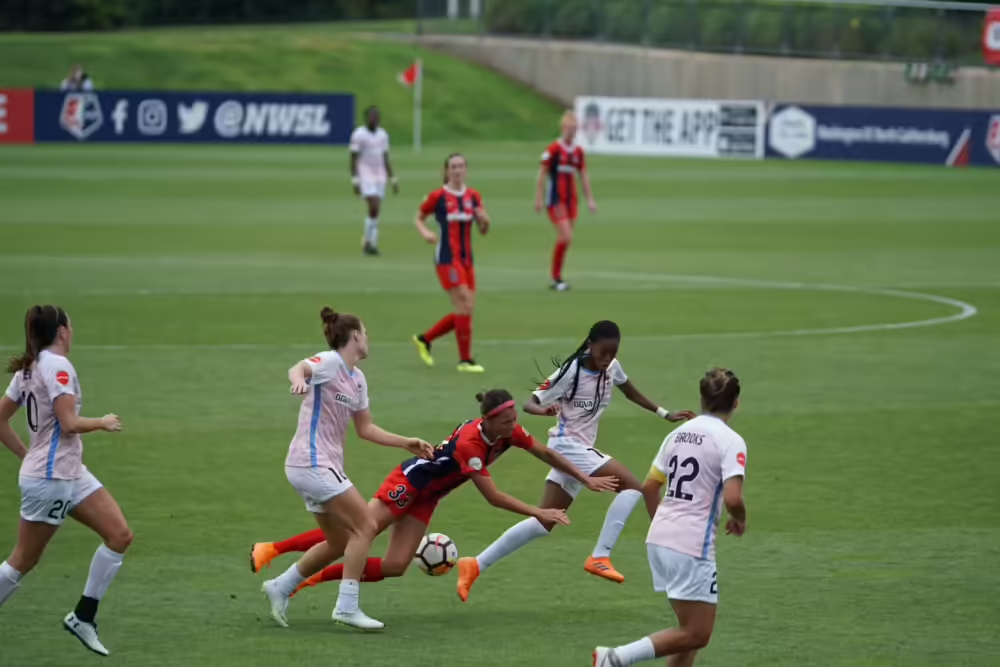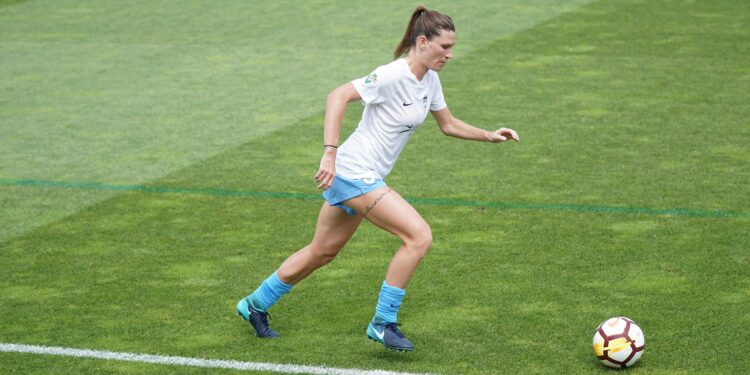FIFA’s Role in Promoting Women’s Soccer Globally: Progress or Lip Service
Women’s soccer has developed greatly over the past few years, with FIFA leading many efforts to grow the game. There has been an increase in prize money, further funding of grassroots investment, and an expansion of international competitions. But is FIFA making positive change or simply pretending to? Let’s analyze the numbers, the actions taken, and their effects on the world.
FIFA’s Initiatives for Growing Women’s Soccer Worldwide
To enhance women’s games, FIFA has put into place an array of initiatives. In 2020, the Women’s Development Programme was launched to help national associations establish sustainable systems with financial, professional, and technical assistance. Over a hundred countries rich in resources have benefited from this program, with the main focus on coaching, league development, and player pathways.
Moreover, in its Women’s Football Strategy (2018-2026), FIFA set an ambitious target of more than 10,000 female footballers globally. To achieve this target, spending has been significantly increased, setting aside $1 billion for women’s soccer between 2019 and 2023. This funding has focused on infrastructure, youth academies, and professional leagues in many of the lesser-developed soccer countries. Also, part of the funds will go to more coverage of women’s football in the media because it is currently at an insufficient level. However, in fact, the number of fans of women’s football is growing, as are the football odds for these competitions. We hope that the growth will not stop and that more and more people will learn about and love these women’s competitions.

Investment in Women’s Tournaments: Is It Enough?
FIFA has significantly raised the prize money for the Women’s World Cup. The total prize pool in 2019 was $30 million, and it increased to $110 million in 2023, which is an increase of 267%. This, however, is still considerably lower than the $440 million prize pool offered for the Men’s World Cup in 2022.
Prize money isn’t the only thing on the rise. The 2023 Women’s World Cup broke records for viewership, with over 2 billion people watching it from all parts of the globe. Unfortunately, FIFA seems to be struggling with broadcasting deals. The first offers were already 10 to 20 times lower than what was offered during the Men’s World Cup. Gianni Infantino, the FIFA president, even threatened to go on a media blackout in Europe to enforce fair treatment from broadcasters, emphasizing the ongoing relevance of gender inequality.
The Impact of the Women’s World Cup on Global Recognition
The Women’s World Cup has undoubtedly changed the way the world views women’s soccer. Here’s how:
- Attendance Increase: The 2023 Women’s World Cup had 1.97 million attendees, which is significantly more than all other tournaments combined.
- Increased Sponsorship: Companies like Visa, Adidas, and Coca-Cola extended their support and investments in women’s soccer, creating more opportunities for clubs and players.
- Expansion of National Teams: More nations can now compete in the Women’s World Cup because FIFA increased the number of teams from 24 to 32 for the 2023 tournament. This increase further improves the competition’s global outreach.
- Improved Training Facilities: FIFA provided equal training amenities, such as accommodations and traveling conditions, to the women’s teams, which was not done before.
Even with these successes, there are still regions that deal with gaps in payment, lack of media coverage, and an underabundance of professional opportunities. And if you want to be the first to know about the solution to these problems, subscribe to MelBet. There, you will find a lot of useful content that any fan will like. From news to insiders and memes, the variety will amaze you.
Addressing Pay Gaps and Resource Disparities in Women’s Soccer
Women’s soccer continues to grow in popularity, and one of the issues at center stage is the pay gap. For women, the average professional athlete makes only $14,000 a year, compared to male players who earn millions. A little over 60% of women reported balancing a second job in 2022 to be able to continue pursuing soccer.
Most national representations have already made changes accordingly. The U.S. Soccer Federation, for example, now pays its female athletes equally to men and even shares FIFA prize money evenly. Other countries, like Australia and Norway, have also set the same base salary for all players. Unfortunately, the club level remains deficient. Women’s teams still tend to be offered significantly less funding for training facilities, medical staff, and even marketing.
Challenges Female Players Face Despite FIFA’s Promises
FIFA has done quite a bit, although countless female athletes are still held back from achieving their goals because of:
- Few employment options: There are only a few countries that have fully professional women’s leagues, and without them, a lot of talented players are left without potential career options.
- Little media attention: Women’s games receive considerably less airtime and media attention, which results in fewer sponsorship deals as well as a lack of engaging fans.
- Dangerous game environments: In some countries, women face restrictions and social stigmas attached to playing soccer, which reduces the number of women playing the sport and hinders their career progression.
- Reduced funding for youth services: While FIFA does support youth programs, support is usually patchy and leads to fewer opportunities for young girls than for young boys.
FIFA has taken steps in a positive direction, but this array of challenges demonstrates that there is still a great amount of work to be done to achieve true equality within the sport.

Breaking Barriers or Just a Beautiful Illusion?
Women’s soccer is on the rise, without a doubt, and FIFA has been quite helpful in its development. However, is this growth adequate? Investments have been made, yet glaring and noteworthy differences still exist. The amount of joy showcased by fans during the Women’s World Cup clearly indicates that fans want more. At this point, we need to find out whether there is real change in the development of women’s football or whether it will die out as soon as the cameras are off. The reality is that without concrete results, promises mean nothing in the ever-changing world of women’s soccer.















